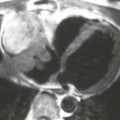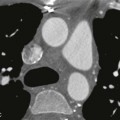Choosing to become an interventional radiologist means entering one of the most exciting and rapidly evolving fields in modern medicine. Interventional radiology offers a combination of advanced imaging and minimum invasion procedures that shorten the recovery time and minimize the risk of complications and painful side effects post-procedure. Interventional radiology, although still invasive (the radiologists access the body through cuts and punctures), treats issues like internal bleeding without the need for large-scale surgeries with a long rehabilitation period.
If you are passionate about medical innovations and patient care, pursuing an interventional radiology degree would be the perfect path. In this article, you will be provided with a step-by-step guide on how to become an interventional radiologist and how to succeed career-wise in this competitive field. Before we begin expanding on the interventional radiology requirements, we need to point out the importance of academic excellence. Managing coursework and clinical rotations can be hard, so having a solid backup in the form of professional essay services helps students stay on top of their classes during residency applications when time is limited. Many of these essay writing service reviews offer help on a tight deadline, which is another reason students are seeking external help when applying for an interventional radiology degree in their home country or abroad. An interventional radiologist who values their time will use the speedy paper reviews to take their assignments to the next level and make their personal statement stand out.
Understanding interventional radiology: an overview
Interventional radiology uses real-time imagery, such as CT scans, X-rays, ultrasound, and MRI, to guide small instruments like catheters, needles, and wires through the body to treat a variety of conditions that would otherwise demand a complex surgical intervention. Unlike a traditional surgeon, an interventional radiologist often works through tiny incisions, offering procedures such as:
- Stent placements for patients. Stents are miniature mesh tubes that are inserted in the blocked blood vessels to help keep them open and improve the blood flow.
- Tumor ablations. An interventional radiologist will use heat, cold, and chemicals to dissolve abnormal tissue without the need for an open surgery.
- Drainage of abscesses. A professionally trained interventional radiologist will use an image-guided directive to insert a small tube into an infected pocket of fluid and drain it safely and without the mandatory surgical intervention.
- Image-guided biopsies. Interventional radiology uses CT or ultrasound to guide a needle into a suspicious area and collect tissue samples for diagnosis.
- Embolization to stop bleeding. Interventional radiologists block off damaged or bleeding blood vessels by injecting special materials, helping control internal bleeding.
Interventional radiology is a field that does not only demand technical expertise but also a strong foundation in diagnostic radiology, anatomy, and patient management.
Steps on how to become an interventional radiologist
- Earn a bachelor’s degree
How to become an interventional radiologist and get a degree in the relevant field? To obtain the necessary qualifications, you must pursue a related undergraduate degree. A doctor who wants to be an interventional radiologist should apply for one of the following degrees:
- Biology. Getting a degree in biology ensures you have a strong foundation in anatomy and cellular processes. Understanding how biological systems work is important for an interventional radiologist determined to build their professional expertise around minimally invasive procedures and human physiology.
- Chemistry. A degree in chemistry is necessary for an interventional radiologist who wants to understand how chemical reactions and contrast agents operate during the least invasive procedures. Being aware of the chemical compounds and pharmaceuticals during the diagnostic screening helps the professional interventional radiologist obtain a clear view of the patient’s diagnosis and aids with procedural safety.
- Physics. If you aspire to become an interventional radiologist, physics is the backbone that you require. As an interventional radiologist, you will be asked to get insights into concepts like radiation and imaging technology. Physics allows students who want to pursue an interventional radiology degree to delve into the mysteries of radiological equipment, studying the physical forces behind the use of catheters, stents, and needles.
- Biomedical sciences. Biomedical sciences provide a future interventional radiologist with a combined knowledge of biology, medicine, and technology. This allows the beginner interventional radiologist to understand the underlying issues causing the disease they are treating and provides them with a list of tools for targeted interventions.
If you are preparing for medical school, getting one of the above degrees may not be enough to qualify. Courses in anatomy, physiology, and medical ethics may be required for a successful career in interventional radiology. While the major for your specialty is not fixed and may vary depending on the institution, excellent grades in science and math are mandatory.
- Take the MCAT
The next step in your interventional radiology education would be applying to medical school and taking the Medical College Admission Test (MCAT). MCAT is designed to assess your knowledge of medical science, scientific concepts, and critical thinking principles. You have to score a competitive amount of points in your MCAT exam if you want your interventional radiology degree to be in a reputable medical school.
- Complete medical school
Knowing how to become an interventional radiologist will ensure your future success and allow you to become a certified professional in the field. The next stage in obtaining a medical degree as an interventional radiologist would be a medical school graduation. Medical school takes four years in general and can result in you getting one of the two possible interventional radiologist degrees (Doctor of Medicine or Doctor of Osteopathic Medicine). The first two years in medical school are dedicated to studying the following disciplines:
- Anatomy
- Pharmacology
- Pathology
- Medical law and ethics
The last two years require an interventional radiologist to participate in the clinical rotations, including radiology and internal medicine.
How long does it take to become an interventional radiologist?
Many students wonder, how long does it take to become an interventional radiologist? The timeline is standard for students wanting to get an interventional radiology degree without stress and practice their medical skills before they start working in professional clinics:
- 4 years: The first four years entail getting a Bachelor’s degree in the adjacent field and receiving classical education for your interventional radiologist training.
- 4 years: The next four years are dedicated to completing medical school for an interventional radiologist degree.
- 1 year: Internship and a preliminary year in surgery or medicine are required for an interventional radiologist career.
- 6 years: Residency and fellowship in interventional radiology are the final steps on your way to professional success.
So, what is the ultimate answer to the students wondering how long does it take to become an interventional radiologist if they are determined to pursue a career in the field? If we summarize the entire time it takes to become an interventional radiologist, it will result in a minimum of 10-12 years of post-secondary education and training. However, if you are passionate about interventional radiology as a medical field, you will view this timeline as a necessary road to perfecting your skills and applying your knowledge to practice.
What are the interventional radiology requirements?
To pursue a career as an interventional radiologist, you have to follow specific requirements issued by the National Board:
- Get a Bachelor’s degree with a good GPA. A degree in a related field is required to become a professional interventional radiologist with excellent credentials. The degree also requires the specialists to demonstrate brilliance with their GPA scores to be able to gain admission into prestigious medical schools.
- Score a high MCAT score. Having a high MCAT score signals your readiness to become an interventional radiologist who understands the meaning of scientific concepts, can make informed decisions, and can apply logical reasoning to diagnosing patients and patient-centered care.
- Get accepted into an accredited medical school. Getting accepted into an accredited medical school means securing your future as an interventional radiologist through rigorous training and education. An acclaimed medical school ensures doctors get proper clinical preparation and develop the foundational skills necessary for the interventional radiology specialty.
- Complete medical school with good evaluations. An interventional radiologist must graduate from a medical school with brilliant clinical scores, as this will later impact their ability to function in healthcare teams and interact with patients under their care. A good clinical evaluation guarantees professionalism when handling especially complex patients, which is a necessary qualification for an interventional radiologist with a medical school degree.
- Pass scores on USMLE or COMLEX. Passing scores on USMLE and COMPLEX is compulsory if you are planning a serious career in interventional radiology and need your medical licensure to be perfect. Both of these tests are meant to confirm your credibility in the field of medical procedures, scientific concepts, and basic medical skills and competence.
- Get accepted into a residency program. Once you get accepted into a residency program as an interventional radiologist, you will begin training under the world’s most acknowledged physicians, learning hands-on secrets of the craft and acquiring practical experience to be able to work with patients and interact with your medical team on premises. A residency program is your chance to learn from the best in the interventional radiologist community while combining theoretical knowledge with practical sessions. It is a very important milestone for an interventional radiologist who wants to follow in the footsteps of their predecessors and learn about the craft through direct collaboration.
- Complete a residency program successfully. An interventional radiologist must complete a residency program in order to make progress in the medical field and remain qualified for future developments. For medical professionals who need an upgrade in knowledge, a fellowship training in interventional radiology is required. The fellowship training allows a future interventional radiologist to acquire useful technical skills and learn the major patient-management rules and principles they will apply in this highly specialized field of medical expertise.
- Get board certification in interventional radiology. Your professional qualifications will not be validated until you receive board certification in interventional radiology. A student aspiring to become an interventional radiologist needs to showcase their qualifications to eliminate doubts and assert their professional standing in the medical area.
Knowing how to get into interventional radiology will help you understand the main principles and standards of patient care and allow you to demonstrate your technical competence in professional surroundings.
Is interventional radiology competitive?
Is interventional radiology competitive? With more and more young specialists wanting to receive board certification in interventional radiology, it would not be an exaggeration to say that Interventional radiology is an incredibly competitive field. There are several reasons why interventional radiology is so desirable among students applying to medical school. An interventional radiologist will obtain the potential for high income shortly after graduation, combining their degree with an advanced understanding of image-based diagnostics and patient-centered care.
These factors alone can make an interventional radiologist a desirable figure in the job market. Pair that with an excellent academic record and research experience, and you will understand the scope of possibilities available to a young professional in the field of interventional radiology and modern medicine. Additionally, an interventional radiologist may strengthen their presence in the industry by participating in specialty rotations, conferences, seminars, lectures, and research projects during their time in medical school. Due to the increased competition in the field, your interventional radiology application should be strengthened by proactive networking (making useful connections in the field of interventional radiology through attending conferences) and prolonged commitment to the degree (a standard time to become an interventional radiologist with a certified diploma will usually take around 12 years in total).
How to get into interventional radiology residency
An interventional radiologist must match into a residency that will allow them to develop their skills and continue their interventional radiology education seamlessly. Here is how one gets accepted into a competitive residency:
- Excel in medical school. Your grades and clinical evaluations will help your case as an interventional radiologist and allow you to establish your credibility in the field. USMLE scores can also help an interventional radiologist improve matters significantly.
- Get radiology experience. Doing electives in interventional radiology is great for acquiring early experience in the field, especially if you are already doing professional clinical rotations as an interventional radiologist.
- Participate in research. Another way to get into interventional radiologist residency is to start publishing or conducting research on interventional radiology and the newest radiology methods (also known as minimally invasive procedures and interventions).
- Do the networking. Becoming an interventional radiologist is also about one’s ability to perform networking. Networking includes an entire set of skills that mainly revolve around attending specialized and niche interventional radiologist conferences with the goal of connecting with mentors and specialists in the field. Students can also seek out advisors to help with powerful recommendation letters that will set them apart from other applicants in the interventional radiologist community.
- Create a personal statement. An interventional radiologist must have a clear personal statement that will allow them to showcase their goals and ambitions and help them stand out from the rest of the applicants. A professional writing service can be used for an interventional radiologist medical school application.
Those applying for a residency should remember that an interventional radiologist committee is highly selective due to the high-income potential of the profession as well as the demand for cognitive expertise and professional technical skills of the applicant. As an interventional radiologist, one should start preparing early for a professional career due to the extreme competitiveness of the field and its rapid technological progress.
When it comes to choosing the right program for your residency, an interventional radiologist should consider several options: clinical exposure and the number of procedures they will be allowed to perform as their hands-on experience, the popularity rate of their residency mentors and whether the mentors have engaged in any recent faculty training sessions to improve their credibility, and high pass rates of the residency, as high rates indicate high professional qualifications you will also obtain as an interventional radiologist. Most of the time, it is not just about the title of the program or the specialty you are choosing – it is about the skills you will obtain as an interventional radiologist after you graduate medical school.
Stay updated, free articles. Join our Telegram channel

Full access? Get Clinical Tree








